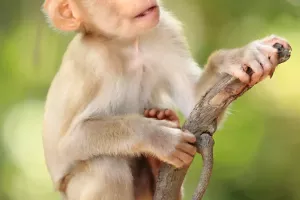Global warming has been most pronounced in the Arctic so far, and the trend is expected to continue. Some predict that we could have a virtually ice-free Arctic in summer before the middle of the century. The reason for this is the unregulated release of carbon dioxide and other greenhouse gases into the atmosphere.
When it comes to the Arctic, polar bears have to be mentioned. Unlike other animals, such as endangered species such as lions or wolves, they face foreseeable threats including poaching and hunting, or human settlements encroaching on their habitat. However, the biggest threat facing polar bears is something that cannot be solved by relevant wildlife protection agencies, and must be faced by all human beings. We must act to reduce greenhouse gas emissions to delay or avoid climate change.
Since the Arctic is warming faster than anywhere else on the planet and sea ice is declining, if it continues like this, no one can save the polar bears, which will be doomed to extinction. Polar bears have high genetic diversity among species, and generally live in relatively dispersed groups separated by long distances, although this suggests that polar bears may have the ability to adapt to the constant changes in the Arctic. However, their reliance on sea ice makes them extremely vulnerable to climate change. Polar bears rely heavily on the sea ice environment for travel, hunting, mating, resting, especially in some areas where they hunt prey such as seals. In addition, their low reproduction rates may limit their ability to adapt to environmental changes.
International environmental groups believe that the priority of polar bear protection should be to identify and protect the "last ice area", and the Arctic region is expected to retain the furthest sea ice in the future, in addition to strengthening the monitoring of polar bear populations.
Much of 2016 was warmer than normal in the Arctic, with sea ice freezing late. In November, the extent of sea ice in the Arctic hit an all-time low for the same period. While the average increase in sea ice extent was faster than normal for the month, it lost 19,000 square miles over a five-day period in mid-November. The National Snow and Ice Data Center said the drop was "almost unprecedented" for the same period in history.
Countries around the world have made a lot of efforts to deal with global climate change. In December 1997, the "Kyoto Protocol" was passed in Kyoto, Japan, which emphasized the "common but differentiated responsibilities" of developed countries in reducing greenhouse gas emissions. The Kyoto Protocol is considered an important first step towards a global emission reduction system, but it has also been criticized for being too rigid in the distinction between developed and developing countries and too loose in overall control measures.
The Kyoto Protocol expires after December 31, 2020. On December 12, 2015, the "Paris Agreement" was adopted at the 2015 United Nations Climate Change Conference, becoming an international treaty to inherit the mission of the "Kyoto Protocol" to address climate change and adapt to its impacts. However, the United States formally withdrew from the Paris Agreement on June 1, 2011. It seems that humans still have a long way to go to deal with global climate change and save polar bears.


